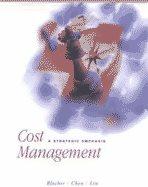Question
Case Study - Break-Even Analysis Having received both the cash flow forecast (Feb Issue) and the financial IMArchEsSuPErmIoRose nes become mich more sware and now
Case Study - Break-Even Analysis
Having received both the cash flow forecast (Feb Issue) and the financial
IMArchEsSuPErmIoRose nes become mich more sware and now nas
a more clear understanding of his tinancial statements
You may recall in the earlier case he was considering investing 27000 in a new childrens play area.
He has decided to partially fund this by long term finance from the bank.
small business advisor (bank emplovee has mentioned the concept of break-
The case now considers the factors that underpin this concent and its application to his accounts. He has recently received his draft profit and loss account for year ended 31 December 2005 and this shows-
Philip Rose Trading as White Swann Inn
Trading and Profit and Loss Account for the
Year Ended 31 December 2005
Sales
Stock at 1 January 2005
Add purchases
Less stock 31 December 2005
Cost of sales
Gross profit
Expenditure
Wages
Heat, light and power
Cleaning and maintenance
Consumables
Insurances
Rent
Business rates
Bank charges
Motor vehicle running costs
Depreciation
Fixtures and fittings
Kitchen equipment
Motor vehicles
Net profit for year
Includes maior re-decoration of bar area
15400
157150
172550
16100
325100
156450
168650
32100
8750
6500
1530
1350
28500
7650
800
1420
5000
1500
3125
98225
70425.
Break-Even
That point at which total contribution is equal to fixed cost and neither a profit nor loss is made.
The total fixed costs in many businesses tend to be high in relation to total cost and therefore a business must maintain a level of activity that not only contributes to covering fixed costs but provides an acceptable, or target level of profit.
To apply this technique to Philip's accounts we need to identify both the fixed and variable costs within the business.
This analysis is based on the accounts for year ended 31 December 2005.
After much discussion with Philip it was agreed that:
one third of the employee costs are variable (he has some core staff ie:
full-time barman - considered a fixed cost)
- 40% of the heat, light and power is variable
- one third of the motor vehicle running costs are fixed
- consumables are considered variable
- cost of sales is the true variable cost
- all other costs are considered fixed
ICB NEWSLETTER APRL BREAK EVEN ANALYSIS
Determine:
- Separate the Fixed and Variable costs based on the assumptions above. Find the Fixed Costs and Variable cosy.
- Determine the contribution margin and contribution margin ratio.
- Determine the Break-Even point.
- Show the break Even point graphically.
- Determine Margin of safety
Step by Step Solution
There are 3 Steps involved in it
Step: 1

Get Instant Access to Expert-Tailored Solutions
See step-by-step solutions with expert insights and AI powered tools for academic success
Step: 2

Step: 3

Ace Your Homework with AI
Get the answers you need in no time with our AI-driven, step-by-step assistance
Get Started


